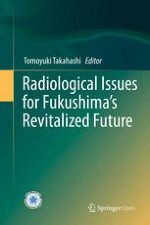15.1 Introduction
15.2 Materials and Methods
15.3 Results
Cs | K | Ca | Na | P | Dry weight | Height | ||
|---|---|---|---|---|---|---|---|---|
Treatment | Bq kg−1
| mg g−1
| mg g−1
| mg g−1
| mg g−1
| g plant−1
| cm | |
(Control) | Non-N | 440 | 21 | 3.3 | 0.09 | 2.0 | 1.6 | 28 |
Calcium nitrate | Low-N | 464 | 22 | 4.8**
| 0.09 | 2.0 | 1.6 | 30 |
Hihg-N | 984 | 24 | 8.1**
| 0.22*
| 1.5 | 1.3 | 17*
| |
Ammonium nitrate | Low-N | 642 | 22 | 3.6 | 0.12 | 2.6 | 1.4 | 25 |
Hihg-N | 1077**
| 19 | 3.4 | 0.09 | 2.3 | 1.6 | 29 | |
Ammonium sulfate | Low-N | 750 | 21 | 3.5 | 0.09 | 2.0 | 1.6 | 30 |
Hihg-N | 1634**
| 21 | 3.1 | 0.12 | 2.9 | 1.5 | 25 | |
